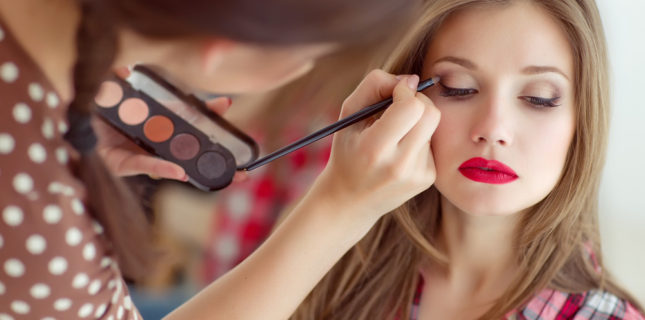
Dangers of Cosmetic Eye Procedures and Products
As more patients opt for cosmetic eye procedures, eyecare professionals need to know how to explain potential problems patients may experience with permanent eye cosmetics and procedures.
Tip: Talk to your patients about these procedures, ideally BEFORE they decide to proceed with them
Eyes may be the windows to the soul, but it seems more and more consumers are redecorating those “windows.” A quick online search will show you the options patients may be considering—everything from eye cosmetic makeup kits, permanent eyeliner, and enhanced eyelashes, to facial filler injections and eyelid lifts.
How popular are these procedures? According to the American Society for Aesthetic Plastic Surgery, blepharoplasty (cosmetic eyelid surgery) is now the third most common elective cosmetic procedure in the U.S. Only liposuction and breast augmentation are more popular.
That being said, fully 85% of cosmetic treatments performed in the U.S. are non-surgical procedures such as wrinkle reducers and eyelash enhancers.
POTENTIAL PROBLEMS
While most patients have few issues, it’s nonetheless your responsibility as an eyecare professional to address potential problems and to be on the lookout for them when seeing patients who have already made a cosmetic change to the eye or surrounding areas.
Here are a few of the most common procedures, along with problems that have been reported.
- EYELASH LENGTHENERS AND EXTENSIONS. While safe for most people, some lengtheners lower intraocular pressure. If patients are being treated for glaucoma or ocular hypertension and use lengtheners, they should be monitored. Other reported side effects include darkened eyelids, dry eye, and, on very rare occasions, a change in the pigmentation of the iris.
Note that there are a variety of eyelash options, from lengtheners like Latisse to many forms of extensions. When extensions are glued on, there can be a number of issues, including allergic reactions to the glue itself.
- FACIAL FILLER INJECTIONS. According to two South Korean studies, injections used to minimize wrinkles can actually cause eye occlusions and stroke. If you have a patient who is considering these injections, tell them that if they have any eye pain afterwards, they need to schedule a complete (dilated) eye exam immediately.
- EYELID SURGERY. Tightening eyelids through surgery (blepharoplasty) can actually improve the field of vision if drooping eyelids have previously impaired vision. However, complications can be experienced, especially among smokers. Both temporary numbness and dry eye are not uncommon.
- PERMANENT MAKEUP. Permanent cosmetic enhancements like eyeliner or eyebrow coloration or augmentation—called micropigmentation—are considered similar to tattooing. One challenge, however, is that state regulatory agencies often don’t manage who is doing what.
Problems can include allergic reactions, which often don’t arise until long after the procedure is completed. Ironically, the FDA reports that anything that is organic, natural or vegetable based is the riskiest in terms of severe allergic reactions. The FDA has, in fact, banned certain makeup inks that, among other things, caused the formation of granulomas (masses that form inside tissue around a foreign substance) and keloids (overgrowths of scar tissues or raised scars). Both have been seen in the areas of the eyes.
Talk to your patients about these procedures…hopefully BEFORE they decide to proceed with them. And share potential problems like the ones we have addressed here.
Do you have patients who have experienced adverse reactions to cosmetic procedures and enhancements? If so, share in our Facebook conversation here about these potentially serious situations.
Comments are closed.







